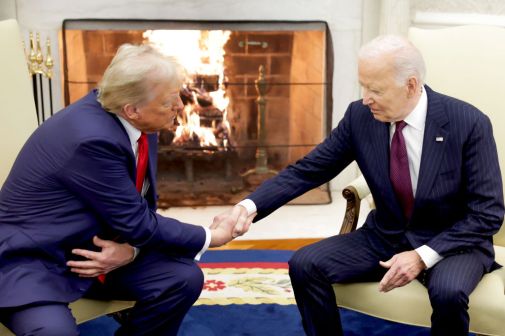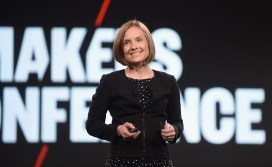IT crucial to smooth 2017 presidential transition

Digital technology and IT will play a key role in safeguarding information and speeding the faltering pace of adjustment when a new administration enters the White House a year from now, according to former White House officials and other presidential transition experts.
Prior presidential transition teams relied on more paper-based and less computerized methods of communicating and coordinating a change in office, which often left a president’s first 100 days ineffective and inefficient, and in some cases put the nation at risk, panelists at a Partnership for Public Service discussion on the upcoming transition said.
PPS CEO Max Stier noted that, during 2008, in the scrambling lead up to the presidential election, hackers thought to be working for China had broken into the computer networks of both campaigns, giving them access to the Obama team’s transition files and early administration plans “outside the confines of a government facility.”
“It is super important, not only that these campaigns are starting to work earlier on this stuff, but that they’re doing it in an environment in which you can have a better guarantee of the security of information,” Stier said Wednesday at the event, organized around the partnership’s launch of its Center for Presidential Transition, created as a single digital resource for guidance and documentation on past transitions so new administrations won’t have to start over from scratch.
There’s also the inherent fear within candidates’ campaign teams that information sharing could fall into the wrong political hands, particularly those of an opposing party, and lead to the sabotaging of the tail-end of their run for presidency.
Josh Bolton, who served as former President George W. Bush’s chief of staff, said his team tried to help expedite the clearance process for top-level appointees who’d eventually enter the White House under President Barack Obama in 2009, but there was an obvious insecurity in the process.
“We were willing to help them get people cleared early, but they didn’t want to have us with all the names of the people whom they were trying to clear for national security positions,” Bolton said. “We certainly wouldn’t have intended to do anything like that, but I think it’s a legitimate fear that a campaign faces.”
There are also concerns with “the translation of your technology platforms from transition activity to actually governing,” Stier said. “That’s another place where you have potential for a lot of misstep.”
With the creation of the Presidential Transitions Improvements Act of 2015, however, experts believe there will be more outside help in facilitating an orderly exchange of power. Under that law and its precedents, the General Services Administration is tasked with helping ensure that smooth transition. The agency launched its own website last November as a resource for candidates in the 2016 election to get a head start in their planning.
Likewise, Stier believes the legislation will give candidates some cover to start “measuring the drapes” earlier and help some of the information security concerns among parties, providing “secure environments for a lot of this work to be taking place.”
During past transitions, there really was no repository or body of help like the partnership and GSA have created to guide new administration staff, who in some cases may have never stepped foot in the White house before.
“There was no playbook … and undoubtedly we made mistakes,” said Thomas McLarty, former chief of staff to President Bill Clinton. “That’s what we were missing in 1992.”
“There was no way to go to a central place, no one stop, there wasn’t anything close to that,” he added. “It was very, very chaotic.”
The United States, though, is a vastly different place since each of the last transitions, with major events like the economic crisis in the late aughts and the 9/11 terrorist attacks changing the level of seriousness the converging administrations must take during the 2017 transition. Bolton recalled the Obama administration’s receiving credible intelligence on a treat of national security during its first few hours. His team had to stay on after if was technically no longer in office to sit “side-by-side” with Obama’s team to ensure it was equipped to handle the threat.
“The threat turned out not to be real, but the intelligence was pretty serious,” he said. “The point is there was no template for this. We were making it up as we went along, and at that point we were just lucky we put in place a couple of those elements.”
The technological advance of the country is another factor that should play into the upcoming transition.
“Technology, the world, information flow has dramatically changed,” McLarty said. “There’s this plethora of information.”
And leveraging that wealth of information is to the transitions teams’ advantage, he said. “Technology is our friend here. I think we can just do things much more efficiently.”
Contact the reporter on this story via email Billy.Mitchell@FedScoop.com, or follow him on Twitter @BillyMitchell89. For stories like this in your inbox every morning subscribe to the Daily Scoop here: fdscp.com/sign-me-on.






